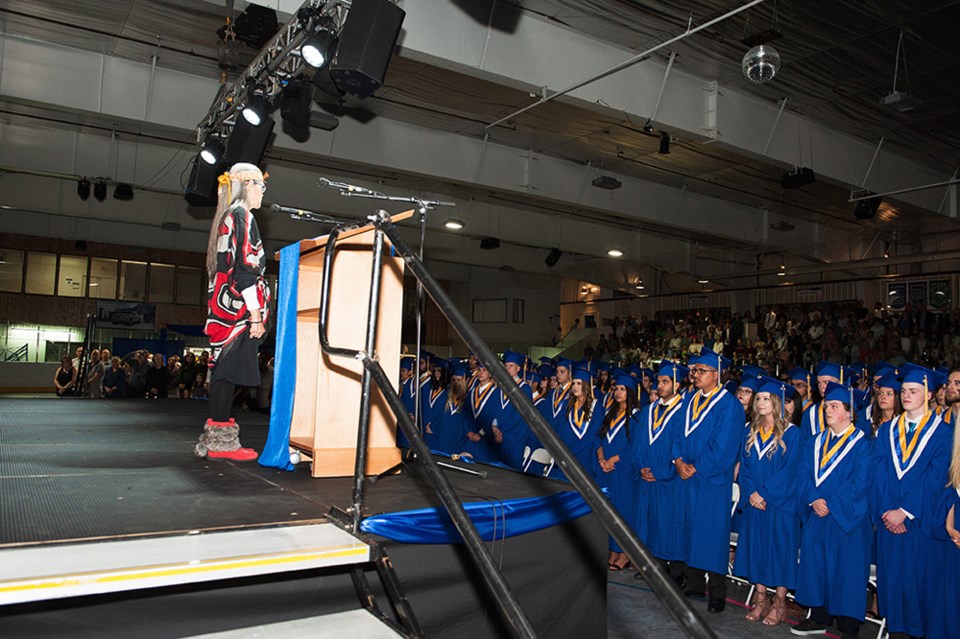The Sea to Sky’s Indigenous high school graduation rate is soaring high above the provincial average for Aboriginal learners, but officials say work needs to be done on numerical, literacy and social-emotional measures.
The most recent six-year completion rates show that Indigenous students in the Sea to Sky School District had a graduation rate of 86.1 per cent in the 2016 to 2017 school year.
The provincial average for Aboriginal students, on the other hand, is 66 per cent.
At the June 13 Sea to Sky School District board meeting, other successes of the Indigenous program were highlighted.
Susan Leslie, district principal of Aboriginal education, said the annual 24-Drum event was able to bring experts on board to teach students the art of powwow dancing. Students also planned out the itinerary of the day and hosted the event.
Furthermore, there was also a good response to the reconciliation blankets program, Leslie said.
“We are creating an amazing collection of stories,” she said.
Nevertheless, Leslie said that there were areas where authorities still need to put their efforts.
She presented survey data taken this spring from 256 students in Grade 5 and 6 classes from schools in the Sea to Sky corridor.
This elementary school report showed that Indigenous students were 19 per cent less likely to participate in school sports than non-Aboriginals.
Indigenous students reported having positive relationships in school 13 per cent less than other students.
Indigenous students were also four per cent more likely to report moderate anxiety compared with non-Aboriginals.
Also presented at the meeting were statistics drawn from 514 Grade 8 to 12 students in the Sea to Sky School District.
Included in the results is that Indigenous students’ self-esteem readings were 23 per cent lower than non-Aboriginals.
First Nation students were 17 per cent less likely to report they had aspirations to finish high school.
Indigenous students were 11 per cent less likely to report positive teacher relationships.
They were 24 per cent less likely to report positive relationships.
Indigenous students also reported depression 22 per cent more than non-Aboriginals.
Leslie also mentioned there were further challenges with respect to Indigenous students’ scores on numeracy and literacy, according to foundation skills assessments.
“Our data across the board in terms of numeracy and literacy — we are looking pretty much the same as we were last year,” said Leslie. “We still have work to do, of course with our [foundation skills assessments] results.”
“It’s showing Aboriginal learners are still performing 50 to 60 per cent, not meeting expectations, especially in numeracy,” she said of the kindergarten to Grade 3 results.
“I brought that forward, as hard as it is to hear, because, you know, there’s always work that we can do and students have a powerful voice,” said Leslie. “We have to gather a team and look at that and support our students and go talk to them.”
It was a sentiment that was echoed by others at the meeting.
“Every vulnerable piece of information we have is overrepresented by students of Aboriginal ancestry,” said Supt. Lisa McCullough. “So we’re going to do the real hard work of having a look at that as an entire school district in November... it’s going to take us to that next place.”
“It’s not just about graduation rates,” said board chair Rick Price. “That’s only one number and it’s only a start.”



